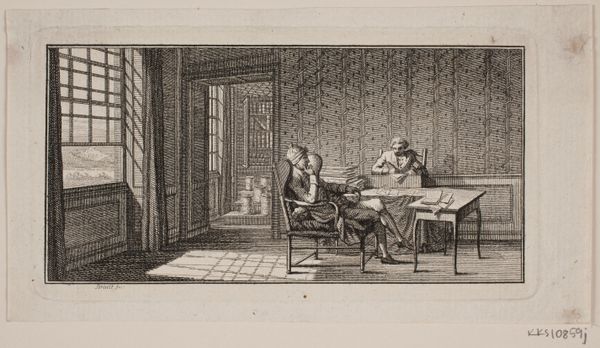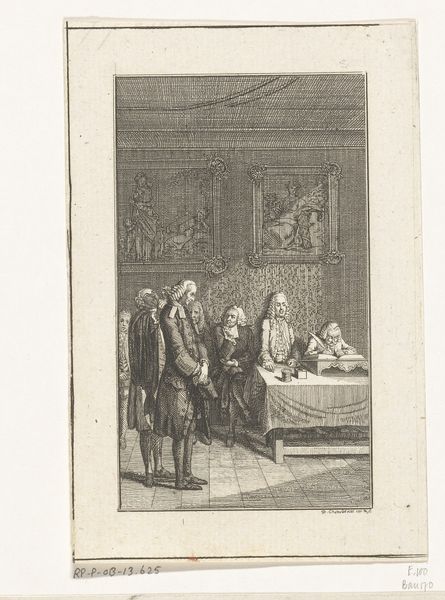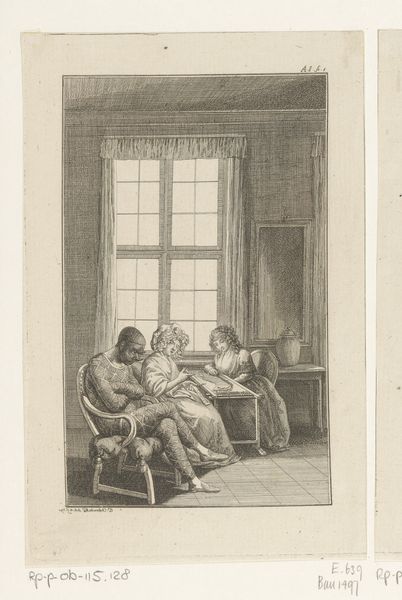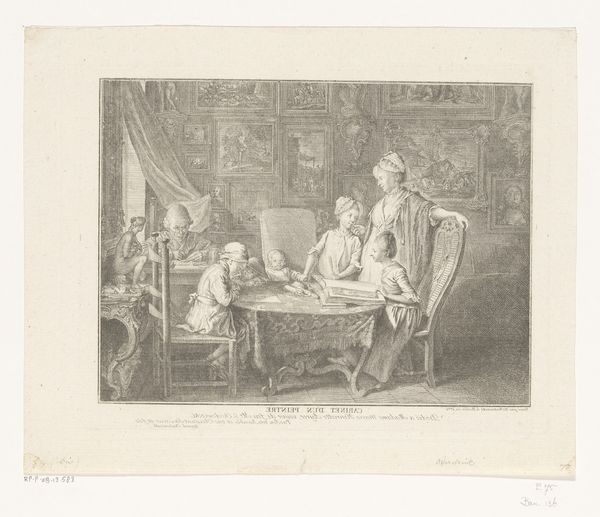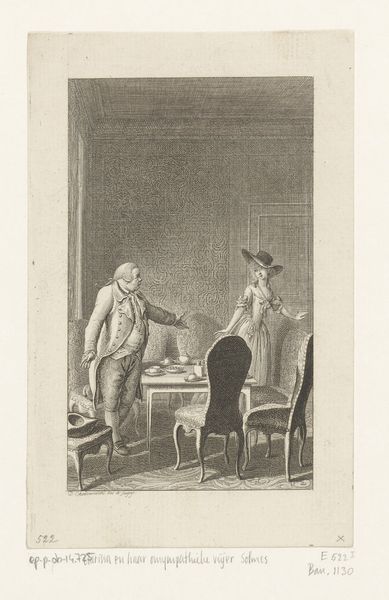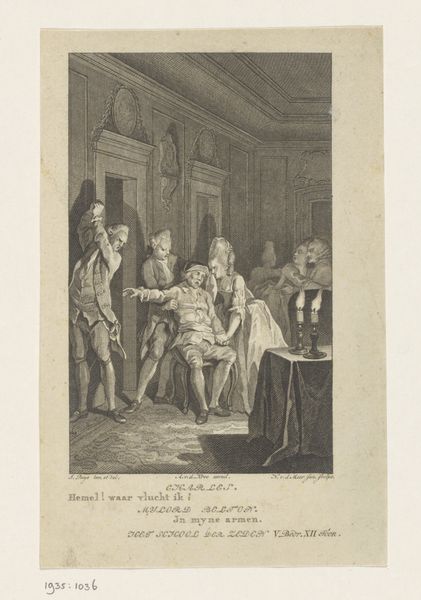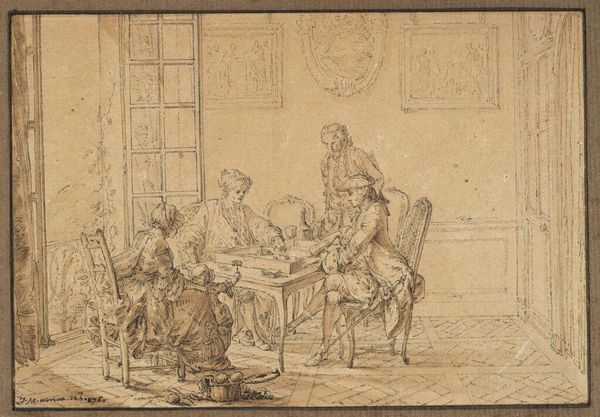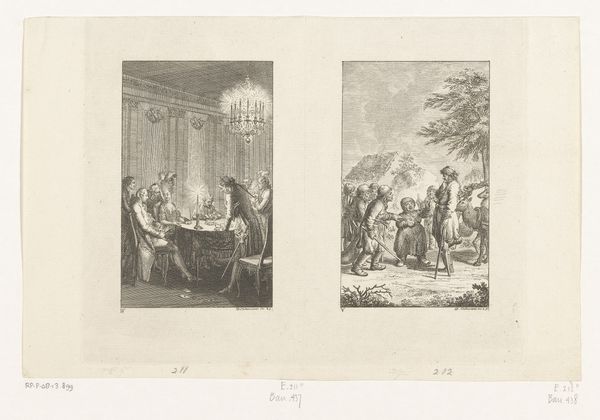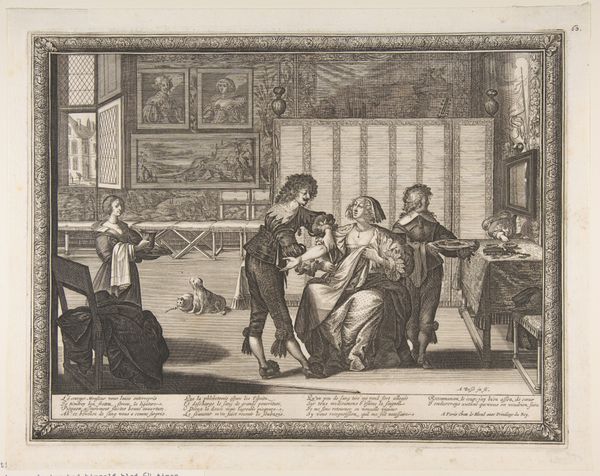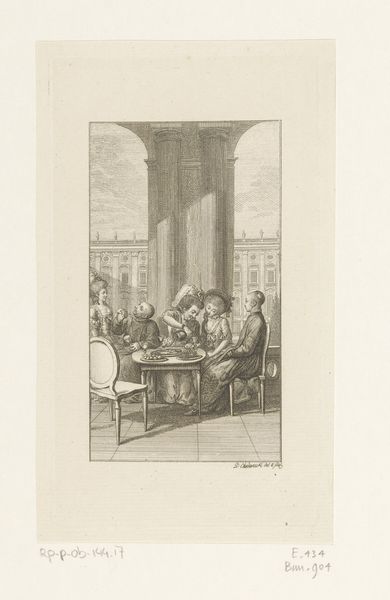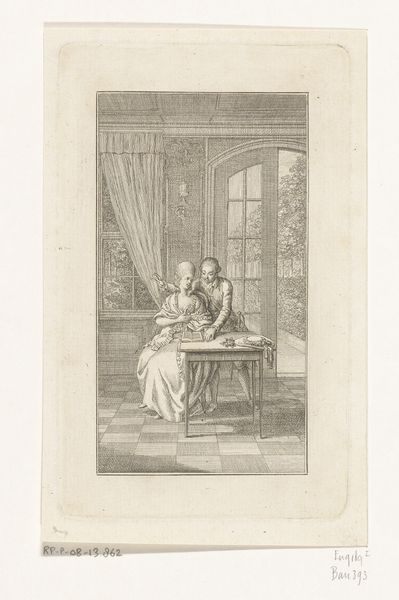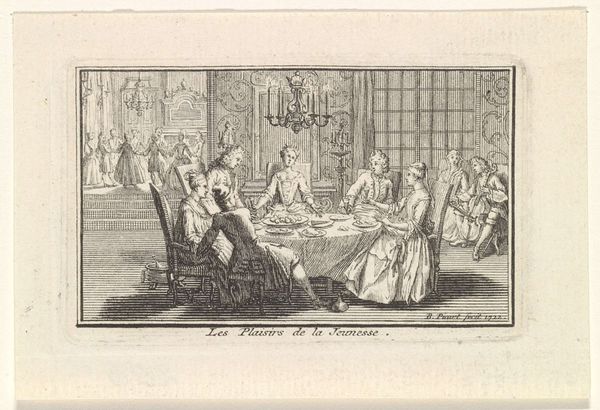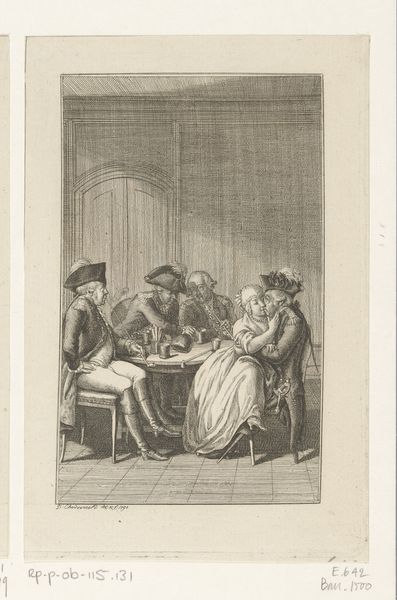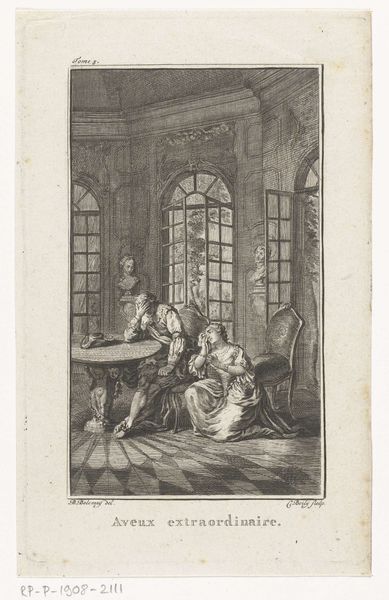
print, etching, intaglio
#
neoclassicism
# print
#
etching
#
intaglio
#
genre-painting
Dimensions: 70 mm (height) x 130 mm (width) (plademaal)
Curator: What a wonderfully evocative print! This intaglio by J.F. Clemens, dating from around 1776 to 1780, is titled "Det indre af en stue" or "Interior of a Room," and you can find it here at the SMK, the Statens Museum for Kunst. Editor: My immediate sense is one of intense interiority – not just a physical room, but a psychological space. Look at how the light floods in, yet the figures remain enclosed. I am curious about that busy, almost oppressive, wallpaper. Curator: Yes, and the print as a medium is critical here. It speaks to broader issues of consumption, of making art accessible within a changing economic sphere, reflecting perhaps an emerging middle class. It democratized image circulation. Editor: Definitely, you can also notice it in the quality and style of lines. This precise hatching and cross-hatching, this laborious detail achieved through a printing process highlights a shift towards valuing craftsmanship and accessibility in art production. This is how most people would be able to "access" an image, by cheap printing! Curator: Furthermore, think about how prints served political functions as well – disseminating propaganda and political critiques in revolutionary times! The print is, after all, easily distributed and replicated. Here, there’s less direct political content, but the focus on interior life also indicates broader societal trends. We're focusing on family and home, in a way never seen before. Editor: Right, consider the stark contrast between the sharp lines of the furniture and architectural details versus the softness of the figures' poses. It almost seems to underscore the tensions between a carefully constructed domestic world and the ever-present pressures that weigh upon individuals! Curator: Indeed! The tension is palpable. One man contemplates while the other pores over documents—perhaps capturing the anxieties of their historical moment, the kind of uncertainty felt within a rising mercantile class? Editor: And isn't there a particular appeal in those almost clinically executed shadows, casting elongated forms that dominate one half of the composition? They suggest so much without revealing anything concrete. Curator: An observation perfectly embodying the power of print! This genre scene invites close observation, much like social dynamics did at that moment, and encourages us to re-evaluate assumptions of domesticity in that epoch. Editor: I agree wholeheartedly. Exploring this etching emphasizes just how potent these kinds of "common" forms can reveal subtle, powerful meanings when looking closely at their form, matter and function.
Comments
No comments
Be the first to comment and join the conversation on the ultimate creative platform.
